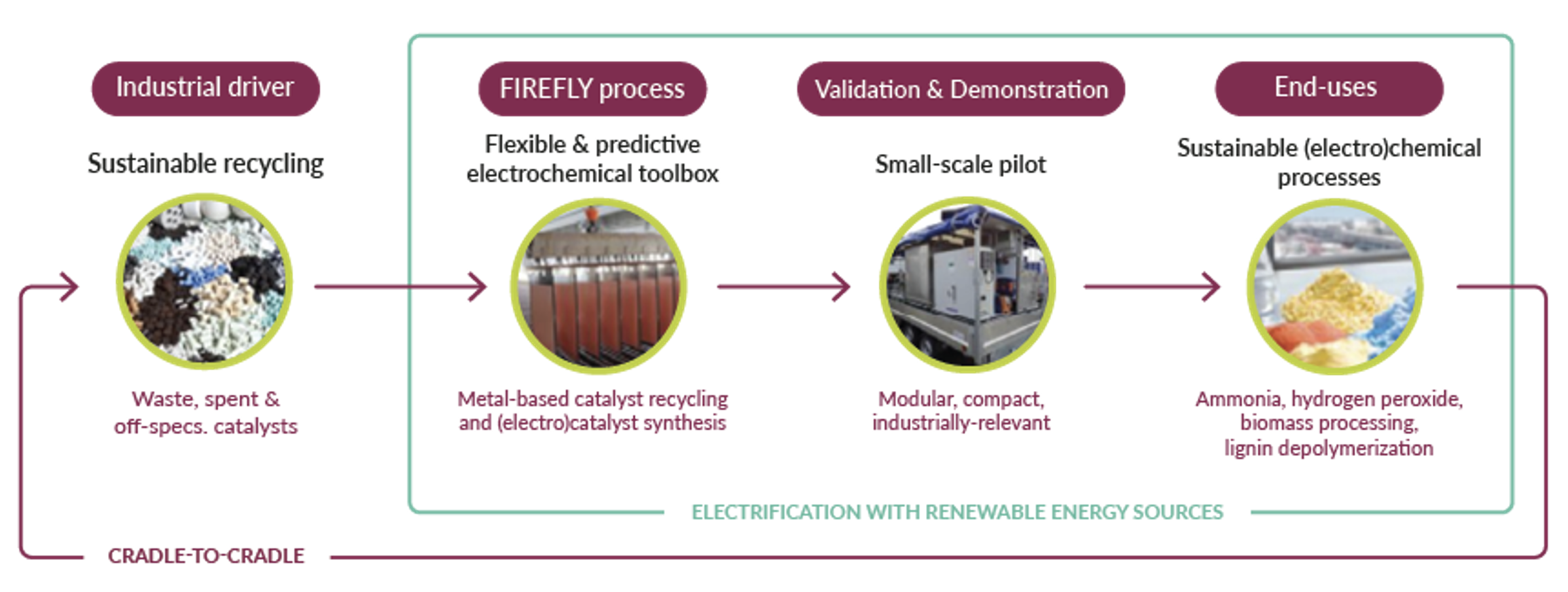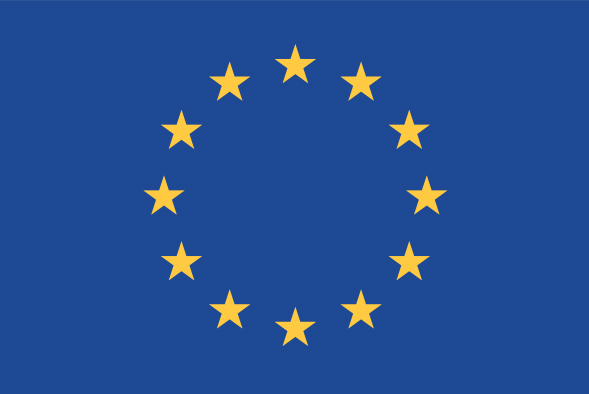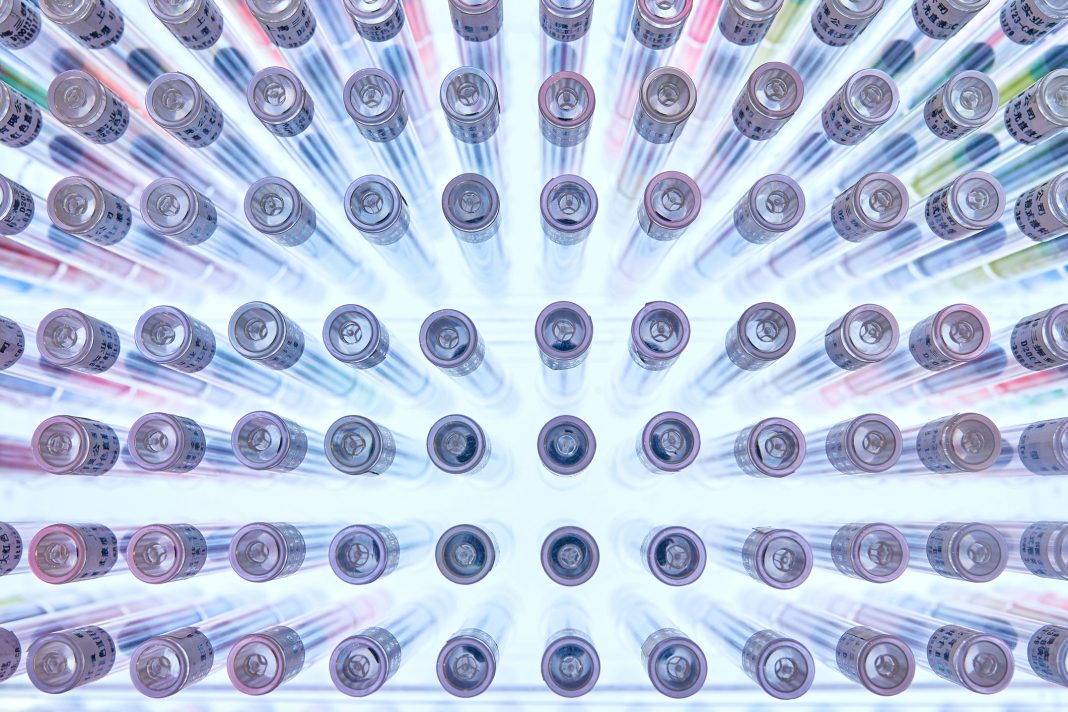Xochitl Dominguez Benetton, Senior Scientist & Project Coordinator at the Flemish Institute for Technological Research (VITO) and the FIREFLY consortium, explore competitiveness and sovereignty through sustainable electrified catalyst recycling
In the heart of today’s industrialised economies, the chemical industry stands as a cornerstone, particularly in the European Union (EU), where it ranks as the second largest globally, boasting sales of over €500 billion – a 38% increase since 2000. The path to maintaining this industry’s vitality lies in sustainable practices: optimising energy use, reducing hazardous emissions, and increasing recycled material use.
Catalysts are the silent heroes of this industry, with 90% of chemical processes depending on them. Essentially, without catalysts, the chemical industry’s backbone would crumble. They are crucial for more efficient reactions, reducing energy use and emissions, and thereby fostering a cleaner, more sustainable economy. Yet, the reliance on metals, often categorised as critical raw materials due to high economic value and supply risks, underscores a vulnerability in sovereignty and competitiveness, mainly when sourced from geopolitically unstable regions.
The silver lining lies in recycling spent or off-spec metal-based catalysts, which are abundant and rich in metal content. Recycling not only promotes circularity but also secures the industry’s foundation.
However, current production and recycling methods must be improved in terms of sustainability and economic viability. The environmental toll of mining, coupled with energy-intensive manufacturing and centralised, carbon-heavy recycling practices, demands a shift towards greener, decentralised methods powered by renewable energy.

The electrochemistry challenge
Electrochemistry offers a beacon of hope, promising to revolutionise both catalyst synthesis, recycling and upcycling. This field allows for less energy-intensive processes that leverage locally sourced renewable energy, significantly cutting carbon emissions and bolstering energy independence. The challenge, however, lies in rendering electrochemical recycling economically viable and aligning it with the socio- economic fabric.
Electrochemistry is unmatched in its ability to procure certain materials cost-effectively, with no alternatives for most elements obtained through electrowinning. This opens a window for electrochemistry to impact catalyst synthesis and recycling significantly. Despite its potential, electrochemical methods need to overcome hurdles related to cost reduction, operational flexibility, and technological and socio-economic synchronisation to become a mainstream solution for catalyst recycling.
FIREFLY and the catalyst-based chemical industry
The EU-funded FIREFLY project emerges as a pioneering initiative, steering the catalyst-based chemical industry towards sustainable electrification and reducing reliance on third-party metals and fossil energies. FIREFLY addresses key areas: electro-driven metal recycling, electrochemical synthesis of metal-based catalysts, utilisation of renewable energy sources, and showcasing these catalysts in innovative processes that challenge the status quo of energy consumption, greenhouse gas emissions, and circularity deficits.
With a consortium comprising academia, research organisations, industry giants and SMEs alike, FIREFLY is advancing its electrochemical toolbox to reclaim critical metals from industrial waste. By employing cutting-edge techniques, the project is on its way to validating these metals as catalysts for cleaner processes.
FIREFLY also delves into optimising renewable energy use and developing an AI-driven tool to enhance decision-making in metal recycling and catalyst synthesis. FIREFLY envisions a transformative shift towards an electrified chemical industry through innovative catalyst recycling practices.
Aligning perfectly with the EU’s strategic policies
FIREFLY aligns perfectly with the EU’s strategic policies, directly contributing to the 2050 climate neutrality goal by promoting energy savings, waste reduction, and substantial CO2 emission cuts. In harmony with the Circular Economy Action Plan, FIREFLY supports using recycled materials over virgin resources, pushing towards a more sustainable and efficient European industrial framework.
FIREFLY supports the REPower EU and Renewable Energy Directive’s sustainable consumption goals by embracing renewable energy. Moreover, its commitment to safer, sustainable chemicals echoes the Chemicals Strategy, marking a significant move away from chemically intensive processes to electrification.
Lastly, FIREFLY’s AI-driven approach to metal recycling and catalyst synthesis embodies the EU’s vision of open strategic autonomy, showcasing Europe’s dedication to technological innovation, sustainability, and circularity.
Revolutionising sustainable catalyst recycling
As FIREFLY marks its first-year milestone, it’s clear the project is not just progressing but revolutionising the field of sustainable catalyst recycling. With its pioneering electrochemical toolbox, FIREFLY has achieved remarkable successes, including near 90-100% recovery efficiencies for zirconium, platinum group metals and tungsten, among other critical and strategic metals. These achievements underscore FIREFLY’s commitment to efficiency, sustainability, and innovation.
Looking ahead towards circularity, sustainability and more
Looking ahead, FIREFLY’s dedication to integrating renewable energy sources stands to redefine industry standards, with the anticipated integration of renewable electricity expected to slash energy input for metal recovery by an impressive 70% and CO2 emissions by more than 65% compared to current practices.
This significant shift towards circularity and sustainability, coupled with the project’s focus on minimising waste, upcycling secondary materials, and fostering a new environmental ethos, paves the way for a chemical industry that’s greener plus, more competitive and resilient.
FIREFLY’s ambitious journey is more than a series of scientific achievements; it inspires hope for a future where the chemical industry thrives on the principles of circularity, climate neutrality, and competitiveness.
Through its innovative approaches, FIREFLY is not just meeting its set goals; it’s setting new benchmarks for environmental performance, driving down CapEx and OpEx, and generating new frameworks for a market that values climate-neutral and circular solutions. The project’s trajectory is a testament to what’s possible when innovation meets sustainability, promising a greener tomorrow and a more prosperous and resilient industry landscape.
In a world craving sustainable solutions, FIREFLY isn’t just lighting the way; it’s electrifying the path towards a brighter, greener, and more sovereign future for the chemical industry.

Grant Agreement no. 101091715.

This work is licensed under Creative Commons Attribution-NonCommercial-NoDerivatives 4.0 International.


